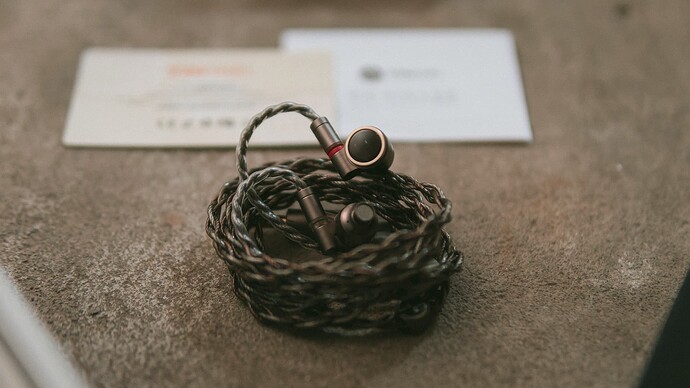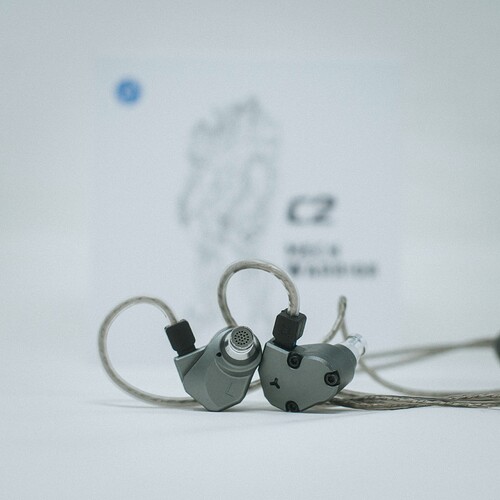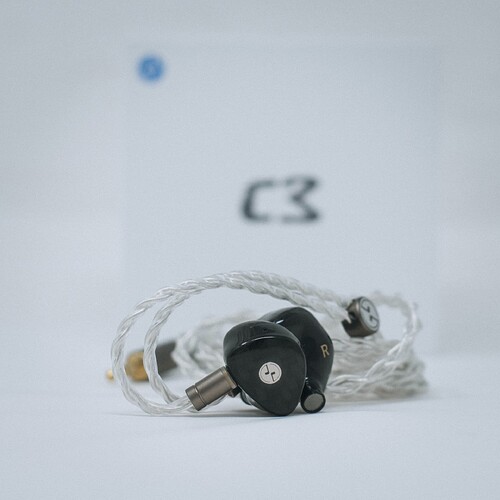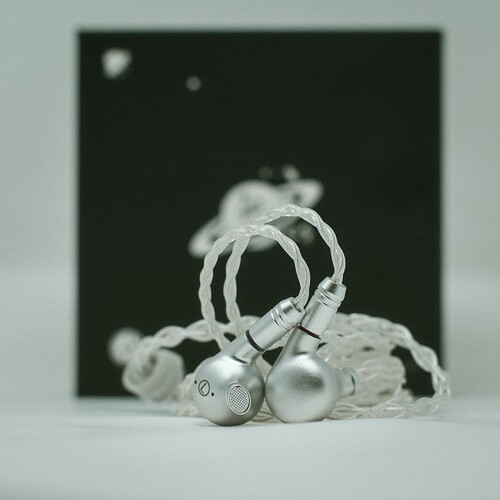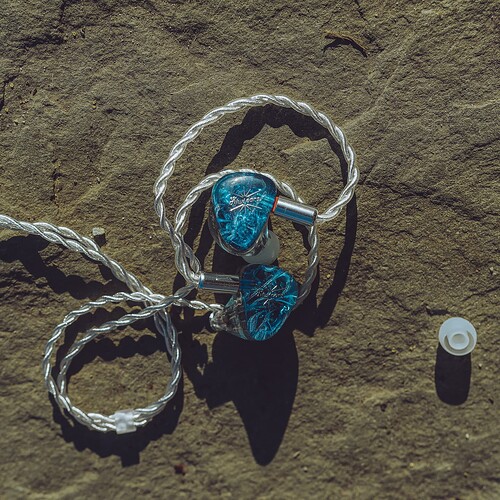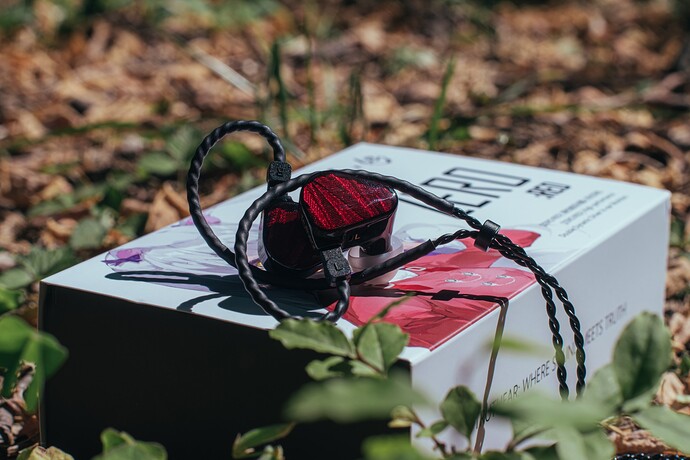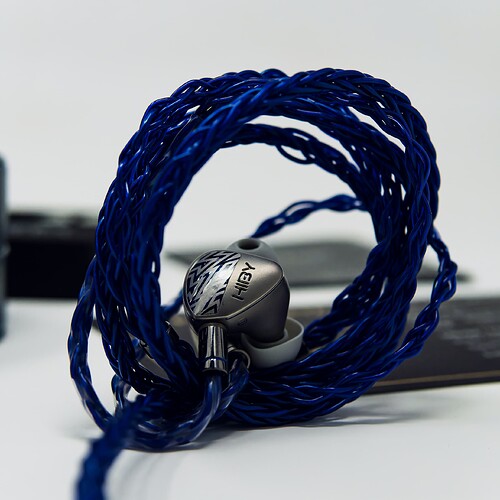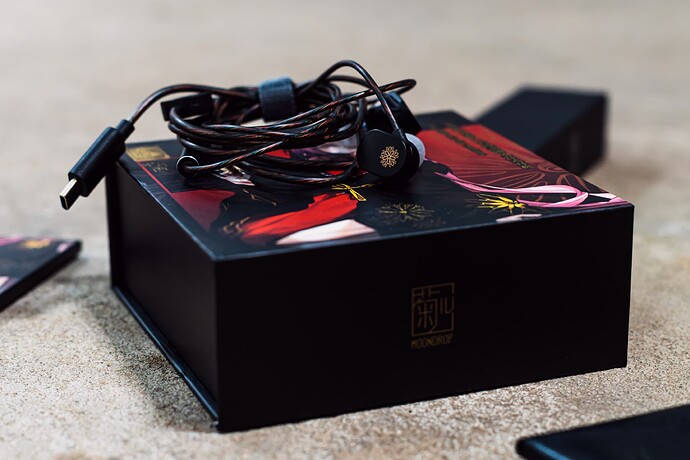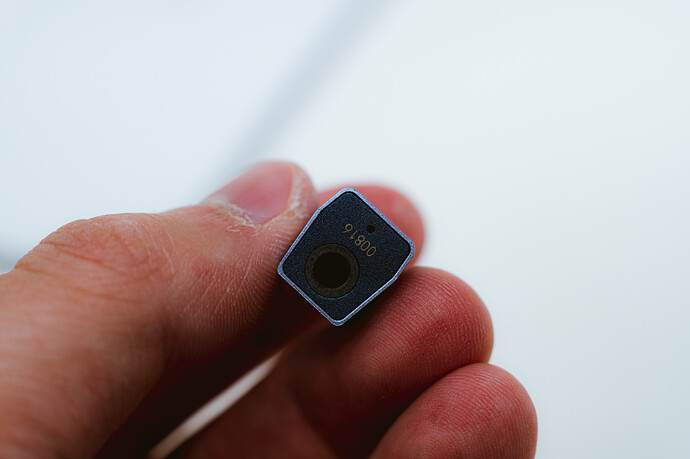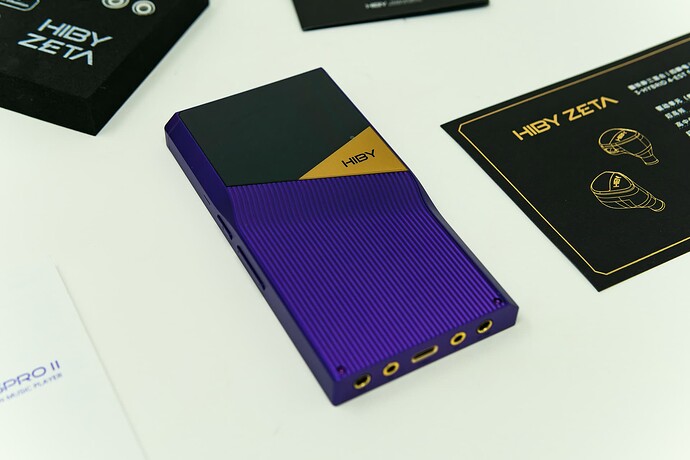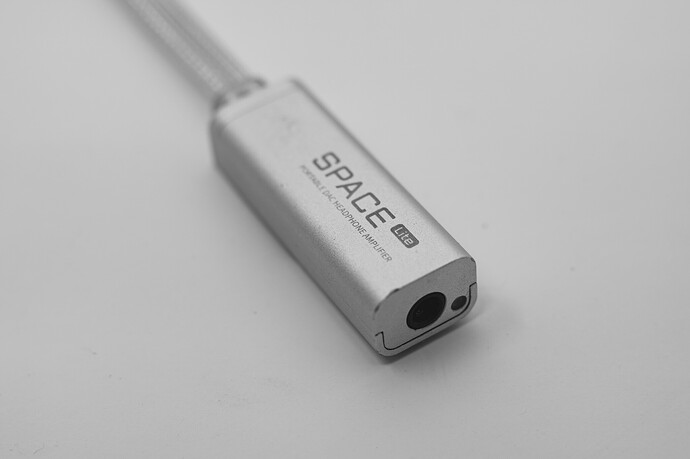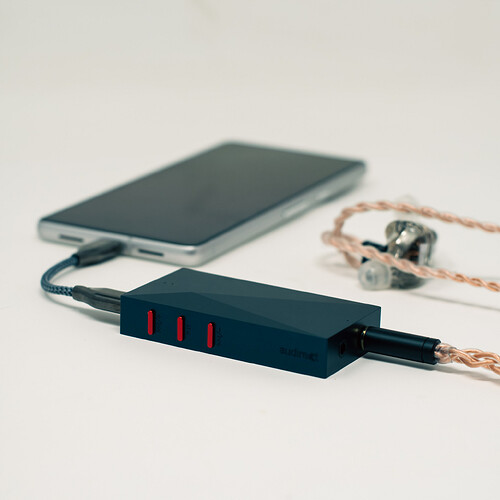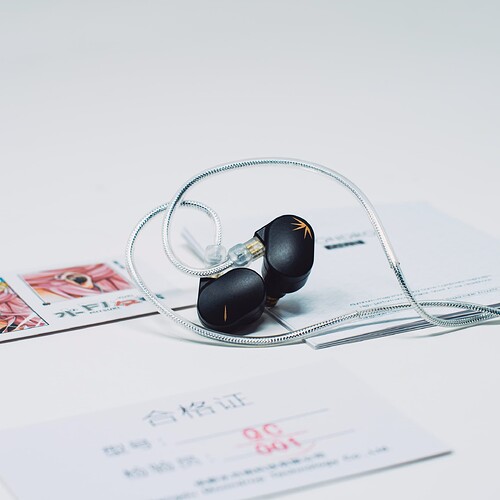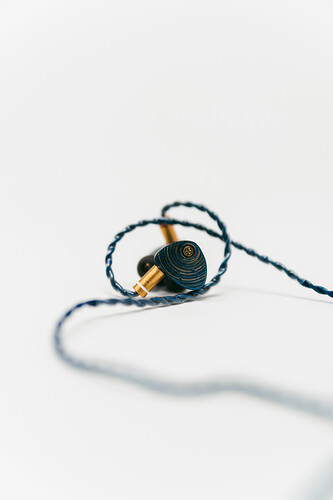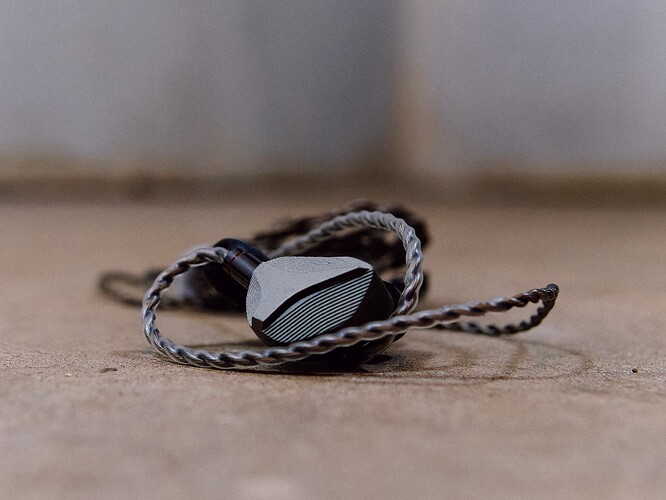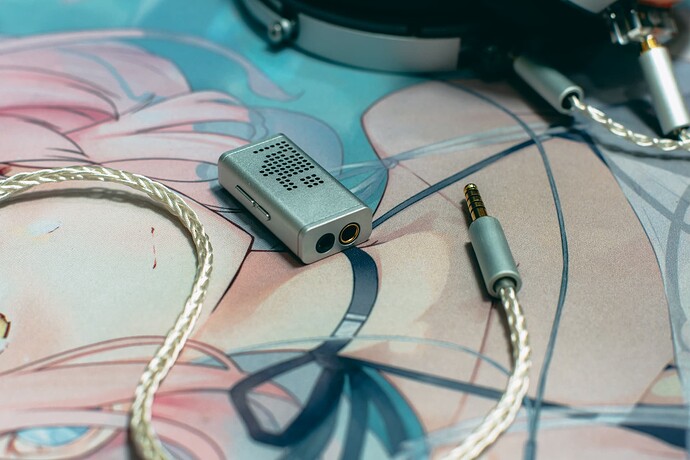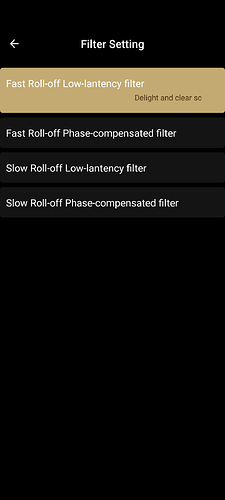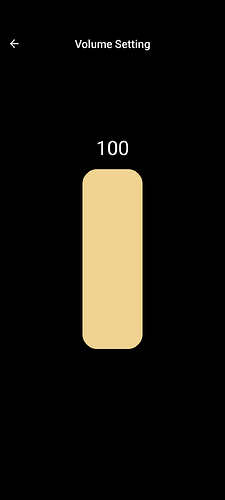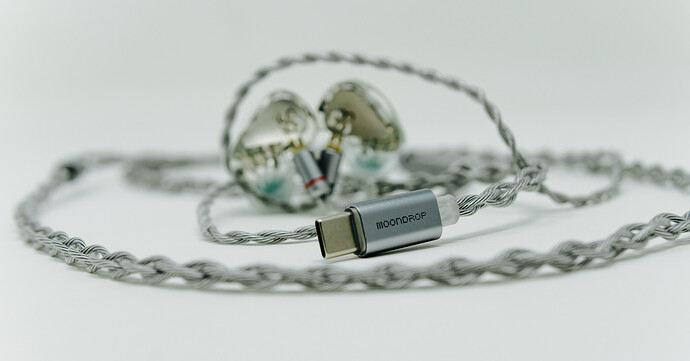Since I can’t edit my intro post, I wanted to make it clear that all measurements currently available on my squiglink database use this clone IEC-711 coupler.
Tin HiFi T4 Plus Review
INTRODUCTION AND DISCLAIMER:
The TinHiFi T4 Plus is an in-ear monitor (IEM) featuring one 10mm carbon nanotube dynamic driver per housing. The T4 Plus retails for $119.99. I am not receiving any compensation, financial or otherwise, for writing this review.
SOURCES:
I have used the TinHiFi T4 Plus with the following sources:
- Qudelix 5K
- Truthear Shio
PACKAGING AND ACCESSORIES:
The TinHiFi T4 Plus comes in a square black cardboard box with a black slipcover. The slipcover displays an image of a satellite that resembles TinHiFi’s iconic tube-shaped IEM design. I’m grateful for the refreshing change from the now-commonly featured anime waifu illustrations on IEM packaging. The rear face of the slipcover features several scannable Quick-Response (QR) codes that link to TinHiFi’s social media profiles.
The IEMs are securely held in place under the box lid, via a white foam mounting sheet. The T4 Plus comes with nine pairs of eartips — three each of generic silicone eartips with black and red cores (in sizes S, M, and L), as well as three pairs of Symbio-like hybrid silicone-foam eartips (also in sizes S, M, and L). The hybrid eartips come packaged in a sturdy, transparent plastic container, whereas the generic eartips come in a clear plastic bag. The T4 Plus comes with a card with quick response (QR) codes that link to TinHiFi’s Twitter and Facebook pages, as well as a user manual written in both Chinese and English. The T4 also includes a semi-rigid pleather carry case with a magnetic closure.
BUILD QUALITY AND DESIGN:
The TinHiFi T4 Plus largely resembles the iconic TinHiFi T2. The IEM is composed of a three-part polished copper assembly, featuring a circular faceplate with a faux-wood grain finish. At the base of the nozzle and the middle housing section, where the two housing sections meet, there are small ventilation holes. The nozzles are equipped with perforated metal covers and robust lips that ensure a secure fit for eartips. The 2-pin ports are fitted flush into a circular base that matches the diameter of the pin connector base on the cable side. This base is marked with a dab of blue paint to indicate polarity. The base of the right-hand side IEM connector and the base of the 2-pin connector of the corresponding cable are red plastic. The corresponding left-hand side bases are composed of clear resin. The housings otherwise lack directional indicators. In fact, the housings lack any branding or text whatsoever.
The only TinHiFi branding on the T4 Plus is found on the metal chin-adjustment choker on the cable, which bears TinHiFi’s logo. I appreciate this subtle approach to branding. I’m always impressed with the aesthetics and quality of the stock cables TinHiFi includes with IEMs at this price point, and this cable is no exception. It uses a quad-braid below the Y-split and double-helix patterns above the Y-split. The metal 3.5mm jack hardware, Y-split hardware, chin-adjustment choker, and 2-pin housings are all similar in appearance to the coppery alloy used for the IEM shells. The jack and Y-Split hardware feature an intriguing fluted pattern engraved onto them. There is strain relief above the 3.5mm jack, but not above or below the Y-split. The cable has pre-formed heat-shrink earguides. The 2-pin housings have “L” and “R” indicators printed in white. The cable is moderately microphonic even with the use of the chin-adjustment choker.
COMFORT, FIT, AND ISOLATION:
The TinHiFi T4 Plus is intended to be worn cable-up. The earpieces have a moderate-to-deep insertion depth. The T4 Plus is neither comfortable nor securely fitting. The housings are on the larger side, which, combined with the deepish insertion depth, makes the user acutely aware that they are using IEMs. Isolation is average. The housings also frequently need to be pushed back into the ear canal. I did not experience driver flex with the T4 Plus.
MEASUREMENTS:
My measurements of the TinHiFi T4 Plus can be found on my expanding squig.link database:
TinHiFi T4 Plus — Squiglink by Bedrock Reviews
SOUND:
The TinHiFi T4 Plus has a V-shaped sound signature that places more emphasis on bass than treble.
The T4 Plus has excellent bass technicalities, managing to strike a good balance between staying nimble in articulation yet still having impact. Bass is adequately resolving for the price and highly textured. There is ample sub-bass rumble. However, I do feel there is too much mid-bass, particularly between 100–200 Hz, which clouds the lower midrange. Midrange clarity is not great. Fast analog percussion, down-tuned and distorted electric guitars, and harsh male vocals can blur together. Combined with the T4 Plus’s limited soundstage, this creates a sense of vertical compression.
The T4 Plus centers its pinna gain region at roughly 2.5 kHz. I find that this causes the vocals and midrange instruments to blend together more than I would prefer. Male vocals do have plenty of warmth, grit, and body. Male vocal intelligibility is moderate. Female vocals enjoy notably better intelligibility and separation from the rest of the frequency response compared to male vocals. However, female vocals do sound a little husky. Midrange timbre is natural-sounding overall.
The T4 Plus has a subdued and unremarkable treble region. There is less in the way of sparkle or air than the T4 Plus’s measured frequency response would suggest. Overall detail retrieval is not quite up to the standard I would expect for this price. As mentioned above, instrument separation and soundstage are quite limited as well.
AMPLIFICATION REQUIREMENTS AND SOURCE PAIRING:
The TinHiFi T4 Plus can be powered by the Apple dongle, though I needed to set the volume on my Pixel 7 to 21/25 to reach my usual listening level when Spotify Normalization was set to “Normal.” Depending on your typical listening volume, music player of choice, and feelings on volume normalization when using a streaming service, you may have more leeway when using the Apple dongle than I do. I did not notice hiss with any of my devices.
CLOSING WORDS:
The TinHiFi T4 Plus is not a bad IEM, but it is overpriced given what it brings to the table. If you are dead-set on a warm, bassy IEM under $150 and are more interested in strong bass technicalities than other performance aspects, it may be worth considering. Otherwise, I would look elsewhere.
The TinHiFi T4 Plus can be purchased below:
TINHIFI T4 PLUS 10mm Magnetic CNT Driver In Ear Monitor — Linsoul Audio
Moondrop LAN Review
INTRODUCTION AND DISCLAIMER:
The Moondrop LAN is an in-ear monitor (IEM) featuring one 10mm beryllium-plated dynamic driver per housing. The LAN retails for $39.99 at ShenzhenAudio. ShenzhenAudio sent me the LAN in exchange for my impressions.
SOURCES:
I have used the Moondrop LAN with the following sources:
- Qudelix 5K
- Truthear Shio
- Apple Dongle
PACKAGING AND ACCESSORIES:
The Moondrop LAN comes packaged in a white, rectangular cardboard box with a slipcover featuring an anime waifu on the front and technical specs and a frequency response graph on the back. In the box, the IEMs are held in place in a white foam mounting sheet. It comes with three generic silicone eartips (S, M, L) but no Moondrop Spring tips. The LAN comes with a card with a quick response code that links to Moondrop’s QQ page, as well as an illustrated postcard and a user manual written in both Chinese and English. The LAN also includes a soft leather carry pouch.
BUILD QUALITY AND DESIGN:
The Moondrop LAN’s earpieces feature an all-metal, stainless steel build with ovular faceplates. The faceplates are etched with a flower petal design, which is the only marking found on the earpieces. This includes directional markings, of which there are none. Metal injection moulding (MIM) manufacturing provides an attractive, consistent finish. There are two small ventilation holes on the inner face of the housing body, one at the base of the nozzle and one near the back edge of the face. The nozzles are equipped with perforated metal covers and robust lips that ensure a secure fit for eartips. The 2-pin ports are recessed.
The only Moondrop branding on the LAN is found on the Y-split hardware, which uses the same MIM stainless steel material as the earpieces. While Moondrop has never been a leader in included cables, the LAN’s cable is underwhelming. The LAN’s cable consists of spiraling silver and black wires wrapped in an unbraided clear plastic sheath. Sadly, the 3.5mm jack does not feature the same MIM stainless steel materials as the earpieces and Y-split hardware. The cable does feature strain relief above the 3.5mm jack. The cable has pre-formed heat-shrink earguides. The right-side 2-pin connector is denoted with a small red rubber ring that sits just below the 2-pin housing. The cable does not feature a chin-adjustment choker and is moderately tangle-prone. On the other hand, the cable is less microphonic than one might expect given the absence of a chin-adjustment choker.
COMFORT, FIT, AND ISOLATION:
The Moondrop LAN earphones should be worn with their cable up. The earpieces have a shallow-to-moderate insertion depth. The LAN is comfortable but is not the most securely fitting IEM. Isolation is less than average, with noticeable driver flex when using larger ear tips.
MEASUREMENTS:
My measurements of the Moondrop LAN can be found on my expanding squig.link database:
Moondrop Lan — Squiglink by Bedrock Reviews
SOUND:
The Moondrop LAN’s sound tuning is the same Virtual Diffusion Sound Field (VDSF) target found in many other Moondrop IEMs. Of the dozen Moondrop IEMs I have reviewed, the LAN’s tuning is most akin to the original Moondrop Aria.
The LAN has more sub-bass than mid-bass, transitioning smoothly between the two rather than adopting a distinct sub-bass shelf. While I would not characterize the LAN as a bassy IEM, there is a good amount of rumble and enough impact to the mid-bass to convincingly render percussion. The LAN has excellent bass technicalities across the board, with terrific resolution, articulation, and texture for the price. The LAN does not have mid-bass bleed.
The LAN has a broad pinna gain region from 2.5 kHz to 5 kHz, creating a clear midrange with good separation between vocals and instrumentation. This comes despite the use of a plateau-style pinna gain region as opposed to a focused peak, which normally results in less separation between vocals and instrumentation. On the other hand, the midrange is on the thin side, with limited body, particularly in the lower midrange. Male vocals are highly intelligible but lack warmth. Male and female vocals are roughly even in emphasis. I do not have any complaints when it comes to the LAN’s presentation of female vocals. Instrument separation is quite good overall, and the overall soundstage is expansive for a budget single dynamic driver design. The overall timbre is pleasant and natural.
The LAN boasts an energy-filled treble response that is more balanced than the Moondrop Chu. The amount of lower treble is just shy of what might cause me discomfort, giving cymbal crashes an exciting amount of sparkle and definition. Similarly, the upper treble region is present enough to create a sense of airiness without making the sound feel artificial. The LAN punches well above its asking price in terms of treble extension, and detail retrieval is excellent.
AMPLIFICATION REQUIREMENTS AND SOURCE PAIRING:
The Moondrop LAN can be powered by the Apple dongle. For me to reach my usual listening level with Spotify Normalization set to “Normal”, I had to set my Pixel 7’s volume to 22/25. Depending on your preferences, you may not have to adjust your volume as much. I experienced no hissing with any of my devices.
CLOSING WORDS:
The Moondrop LAN is what we expect from Moondrop in terms of tuning. While not a bad thing to my ears, some hobby veterans may find it too familiar. If you are not a VDSF convert already, the LAN will not change your mind. However, the Moondrop LAN is a surprisingly competent performer from a technical perspective. I would go so far as to say that the LAN is to the Aria what the Moondrop Starfield was to the Moondrop KXXS, which is to say the lion’s share of the performance for a substantially lower price.
The Moondrop LAN can be purchased below:
MOONDROP LAN Earphone 10mm Dynamic Driver In-Ear HiFi Headphone (shenzhenaudio.com)
“how similar the Cadenza’s midrange tuning is to the Moondrop S8.” - wow that is a HUGE pointer.
I’ve only used the t2 and t4 long ago, recently got the c2. I find it good for it’s price. Was considering the T4 Plus. Now after reading the review, not so much hehe .
TinHiFi C Series Impressions (C2, C3, C5)
The TinHiFi C series includes several recently released budget in-ear monitors (IEMs). The TinHiFi C2 and C3 both feature 10mm liquid crystal polymer diaphragm dynamic drivers, and the C5 features a 10mm square planar magnetic driver. The C2 is $29, the C3 is $49, and the C5 is $79. The C2, C3, and C5 were sent to me by TinHiFi. I am not being compensated for writing these impressions, and my thoughts are my own.
SOURCES:
I have used the TinHiFi C2, C3, and C5 with the following sources:
- Qudelix 5K
- Truthear Shio
TinHiFi C2
TinHiFi C2 — Squiglink by Bedrock Reviews
The C2 is the brightest sounding of the three and is my personal favorite. The C2 is Harman-inspired in its tuning and nearly mirrors the Moondrop Aria from the sub-bass through the lower midrange. Like the Aria, the C2 features a plateau-style pinna gain region which is broadly elevated from 2 kHz to 6 kHz. The C2 has a slightly steeper rise into this plateau than the Aria and places more emphasis on the presence region. The C2 avoids the Aria’s sharp upper treble drop after 10 kHz, which helps its upper register to sound more natural.
Bass articulation is in line with my expectations for the price point and is competitive with similarly priced options released over the last year like the 7Hz Zero. There is plenty of punch and impact to percussion hits, but bass texture is a bit lacking.
The midrange is tuned for clarity and does a great job of intelligibly rendering both male and female vocals. On the other hand, there is too much presence for distorted electric guitars, which take on a buzzsaw-like quality. Male vocals are also on the thin side, and there is a bit of sibilance to female vocals. On the other hand, I do not hear any glaring timbre-related anomalies, like plasticky analog percussion or overly metallic cymbal crashes.
I think the C2 does a great job of delivering a brighter-than-average treble response, especially for the price. There is more lower treble than I would ordinarily prefer, but the C2 generally avoids sounding harsh. The C2 also has the best upper treble extension of the three TinHiFi IEMs and has excellent detail retrieval for a $30 IEM. In addition, the C2 has a remarkably three-dimensional soundstage for a budget single dynamic driver design, with noticeably more depth to its soundstage than the Zero. Instrument separation is adequate but not exceptional.
TinHiFi C3
TinHiFi C3 — Squiglink by Bedrock Reviews
Compared to the C2, the C3 has more sub-bass emphasis, less presence in the upper midrange, and a more relaxed treble response with worse upper treble extension.
The additional sub-bass aids the audibility of bass guitars in heavy rock music but accentuates kick drum hits to the point of being distracting. The C3 fares better than the C2 in terms of bass texture while retaining the C2’s excellent bass articulation and impact.
The C3’s midrange is less clear than the C2’s but is better suited for music involving distorted electric guitars. There is a deliberate dip in the presence region beginning after about 4.5 kHz which keeps the distortion from sounding exaggerated. Male vocals have more body but can be shouty sounding. Female vocals are vibrant without sibilance. Like the C2, the C3 has a natural-sounding timbre.
The C3 has a much more relaxed treble response than the C2. I find it boring in comparison, and I perceive much less detail. The C3 also has worse instrument separation and a more two-dimensional soundstage than the C2.
Overall, while the C3 comes with a much nicer cable than the C2, I do not feel that it justifies its higher price tag relative to its sibling.
TinHiFi C5
TinHiFi C5 — Squiglink by Bedrock Reviews
The C5, which is the most expensive of the three, is unquestionably the worst sounding. It is one of the worst IEMs I have heard in a long time. This is mostly because the C5 has even poorer treble extension than the C3, to the point where there is very little frequency response above the lower treble region. Detail retrieval is nonexistent and the soundstage is a one-dimensional lateral smear. Instrument separation is below average for the price point.
The C5’s bass response is quick in terms of articulation, which might be the only positive thing I can say about this IEM. On the other hand, bass delivery is limp with no punch, impact, or dynamics.
Despite the absence of mid-bass bleed, the midrange is muddy and indistinct. Despite the appearance of a distinct pinna gain region in my measurements, male vocals are half-submerged beneath the vaguely attempted reproduction of midrange instrumentation. The same female vocals that sounded vibrant on the C3 sound nasal and stuffy here. In contrast to the C2 and C3, the C5 has a dry, plasticky timbre.
AMPLIFICATION REQUIREMENTS AND SOURCE PAIRING:
I did not find any of the three IEMs particularly difficult to drive.
CLOSING WORDS:
The TinHiFi C2 is a great budget IEM that ably competes with similarly priced alternatives on technicalities and offers a well-executed take on a less common tuning. The C3 fails to pair its higher asking price with improved technical performance but may be more suited to certain genres than the C2 due to its more restrained presence region. The C5 is a bad IEM at any price and should be avoided.
The C2, C3, and C5 can be purchased below:
Kiwi Ears Orchestra Lite Review
INTRODUCTION AND DISCLAIMER:
The Kiwi Ears Orchestra Lite is an in-ear monitor (IEM) featuring eight balanced armature (BA) drivers per housing. The Orchestra Lite retails for $249.99 at Linsoul. Linsoul sent me the Orchestra Lite in exchange for my impressions.
SOURCES:
I have used the Kiwi Ears Orchestra Lite with the following sources:
- Qudelix 5K
- Truthear Shio
- Audirect Atom 3
- Hidizs S9
- Apple dongle
PACKAGING AND ACCESSORIES:
The Kiwi Ears Orchestra Lite comes packaged in a black, rectangular cardboard box with a dark green slipcover. Inside the box, the IEMs are held in place in a black foam mounting sheet. The Orchestra Lite comes with nine pairs of generic silicone eartips (S, M, L) in three different colors. A black semi-rigid zippered carry case and a user manual are also included.
BUILD QUALITY AND DESIGN:
The Kiwi Ears Orchestra Lite has clear acrylic housing with teardrop-shaped colored faceplates. The faceplates feature the Kiwi Ears logo inlaid in silver. The housings are otherwise unadorned. The housings are unvented and the nozzles have three distinct sound tubes. The nozzles lack protective mesh filters or raised lips with which to secure eartips. The 2-pin ports are flush with the surface of the housings.
The Orchestra Lite includes an attractive 4-core 7n oxygen-free copper cable. The Y-split and 3.5mm jack hardware are polished aluminum, and the chin-adjustment choker is translucent plastic. There is strain relief above the straight 3.5mm jack but not above or below the Y-split. The cable has pre-formed plastic earguides. The plastic base of the right-side 2-pin connector is red, which is the sole directional indicator for the set. The included cable is not especially microphonic.
COMFORT, FIT, AND ISOLATION:
The Kiwi Ears Orchestra Lite should be worn cable up. The earpieces have a shallow-to-moderate insertion depth. The Orchestra Lite is comfortable but is not the most securely fitting IEM. The earpieces are on the larger side and tend to rotate backward out of their ideal orientation. The earpieces also extend past the surface of the ear when fully inserted, so the Orchestra Lite is not ideal if one plans to use them at night. Isolation is less than I would have expected for sealed all-BA IEM. However, there is no driver flex due to the absence of a dynamic driver.
MEASUREMENTS:
My measurements of the Kiwi Ears Orchestra Lite can be found on my expanding squig.link database:
Kiwi Ears Orchestra Lite — Squiglink by Bedrock Reviews
SOUND:
The Kiwi Ears Orchestra Lite has a neutral tuning with a sub-bass lift below 200 Hz.
The Orchestra Lite has atypical bass for an all-BA IEM. From memory, it reminds me of the Softears RSV in that it delivers more textured and impactful but slower and less precise bass than one might expect given its driver configuration. The Orchestra Lite also fares better than one might expect in terms of dynamic contrast, although it does not compete at the level of the RSV. Despite the emphasis on an impactful and dynamic bass presentation, bass resolution and articulation remain adequate for the price point.
The Orchestra Lite has a distinct but restrained pinna gain region centered around 2.5 kHz. This is not ideal for my head-related transfer function and results in less separation between instrumentation and vocals than I would prefer. Instrument separation is variable. For example, there is better instrument separation between male vocals and analog percussion than there is between male vocals and distorted electric guitars. As a result, overall midrange clarity is average at best. The Kiwi Ears Cadenza’s more pronounced pinna gain hump, which is centered at 3 kHz, worked more consistently for me. The lower midrange has plenty of body and warmth despite the linear mid-bass response. Male and female vocals are roughly even in emphasis, though female vocals are more intelligible. Female vocals can occasionally sound strident but generally sound excellent. The Orchestra Lite has very natural-sounding timbre for an all-BA IEM.
The Orchestra Lite has a safe and relaxed treble response that conceals very good internal detail retrieval. The upper treble is less extended than I would like, and there is limited air. The Orchestra Lite does respond well to equalization in this region, but other IEMs in the same price range like the SeeAudio Bravery are going to have more up-front resolution. The soundstage is adequate but is less expansive than I would have expected given the number of BAs used per housing.
AMPLIFICATION REQUIREMENTS AND SOURCE PAIRING:
The Kiwi Ears Orchestra Lite can be powered by the Apple dongle. For me to reach my usual listening level with Spotify Normalization set to “Normal”, I had to set my Pixel 7’s volume to 20/25. Depending on your preferences, you may not have to adjust your volume as high. I experienced no hissing with any of my devices.
CLOSING WORDS:
The Kiwi Ears Orchestra Lite is a good IEM, but not necessarily the IEM one might expect from looking at its technical specifications. Given its particular strengths, it is perhaps best viewed as a budget Softears RSV as opposed to a budget Moondrop S8.
The Kiwi Ears Orchestra Lite can be purchased below:
Truthear Zero: Red Review
INTRODUCTION AND DISCLAIMER:
The Truthear Zero: Red is another collaboration project between Truthear and Crinacle, and is a follow-up to last year’s Truthear Zero. Like the original Zero, the Zero: Red uses a dual dynamic driver setup. A 10mm driver handles low frequencies while a 7.8mm driver handles the remainder of the frequency response. The Zero: Red retails for $54.99 at ShenzhenAudio. ShenzhenAudio sent me a unit in exchange for my impressions.
Much of the non-sound-related content of this review will be lifted from my review of the original Truthear Zero, as the Truthear Zero: Red is nearly identical in physical form and packaging:
SOURCES:
I used the Truthear Zero: Red with the following sources during my review process:
- Qudelix 5K
- Truthear Shio
- Hiby R6 Pro II
- Apple Dongle
MUSIC:
I tested these headphones with local FLAC and Spotify Premium. Visit my last.fm page to get an idea of what I listen to:
XenosBroodLord’s Library | Last.fm
PACKAGING AND ACCESSORIES:
The Truthear Zero: Red comes in a medium-sized rectangular black cardboard box with a white slipcover. The front of the slipcover is illustrated with an anime waifu. The Zero Red’s technical specifications are listed on the back of the slipcover in both English and Chinese. A frequency response graph is also featured.
The Zero: Red includes six pairs of silicone eartips (2xS, 2xM, 2xL), a single pair of foam eartips, a faux leather carry pouch with snap closures, and a detachable .78mm 2-pin cable. Half of the silicone eartips have a wider bore than the other half. In terms of documentation, the Zero includes a warranty card, an owner’s manual, and a cryptic “Install Guide” of unclear purpose.
The Zero: Red also includes two pairs of replacement nozzle covers.
BUILD QUALITY AND DESIGN:
The Truthear Zero: Red has dark translucent acrylic shells and glittery red faceplates. The faceplates have a triangular cross-section and feature a detailed feather-like relief pattern beneath a glossy top layer. The gap between the faceplate and shell is visibly seamless, and the overall build quality of the shell is impressive for the price point. There is a circular vent adjacent to the 2-pin connector, which is slightly recessed. “L” and “R” indicators are printed in gold on the other side of this vent. The nozzles are acrylic with metal mesh nozzle filters. The nozzles are thick and have substantial rims to secure eartips.
The cable uses black sheathed wires wrapped in a quad-braid below the Y-split and coiled into double-helix patterns above the Y-split. The cable has pre-formed heat-shrink earguides and a metal chin adjustment choker. The cable is quite microphonic if the chin adjustment choker is not used. The L-shaped 3.5mm jack uses rubber hardware. There is strain relief above the 3.5mm jack but none at the Y-split.
The Truthear Zero: Red also includes a 10-ohm adapter with attenuates the bass response below 500 Hz. This adapter uses the same materials as the included cable’s 3.5mm jack.
COMFORT, FIT, AND ISOLATION
The fit of the Truthear Zero: Red is identical to that of the original Zero, which is middle of the road in terms of comfort.
The Zero: Red intended to be worn cable-up. The earpieces have a fairly deep insertion depth. Secureness of fit is above average, while isolation is average.
On the other hand, there is no longer any driver flex.
MEASUREMENTS:
My measurements of the Truthear Zero: Red can be found on my expanding squig.link database:
Truthear Zero Red (no adapter) — Squiglink by Bedrock Reviews
SOUND:
Unlike the Truthear Zero, which was tuned to the Harman In-Ear target, the Truthear Zero: Red is tuned to Crinacle’s In-Ear Fidelity target with a 5 dB bass boost.
Like the Zero, the Zero: Red has an elevated bass response below 200 Hz, and has excellent sub-bass extension. The Zero: Red retains the excellent bass technicalities exhibited by the original Zero.
There is a palpable, subwoofer-like impact to the sub-bass region. There is plenty of both rumble and slam, and electronic dance music is a joy to listen to on the Zero. Bass dynamics, texture, and detail retrieval are excellent for a $55 IEM.
Out of the box, the Zero: Red has less sub-bass than the original Zero, which allows for easier pairing with a wider variety of music. The included 10-Ohm adapter, which further attenuates the sub-bass region, is an intriguing addition I would like to see included with more IEMs.
The most noticeable changes from the original Zero are found in the Zero: Red’s midrange, which is less forward than the original Zero’s. The apex of the Zero: Red’s ear gain region is centered around 3.5 kHz, whereas the original Zero was most elevated around 3 kHz. While I generally prefer IEMs that favor 3 kHz, the overall midrange balance of the Zero: Red is superior to its predecessor. It does a better job of balancing vocal delivery and midrange instrumentation. In contrast, the original Zero favored vocals to the detriment of instruments. The Zero: Red does sacrifice a bit of vocal intelligibility to accomplish this balance. Harsh, aggressive male vocals have more grit and power but are slightly less distinct. Male and female vocals are much more even in emphasis than on the original Zero, and female vocals more easily avoid sibilance. The Zero: Red also has a more reasonable level of presence. Distorted electric guitars sound meatier and analog percussion sounds less compressed.
The Zero: Red’s treble is largely identical to its predecessor and shares the same strengths and limitations:
The Zero: Red has neither too much lower treble nor too little upper treble extension, but I do find the measured gap in the Zero’s mid-treble to be audible. The sparkle usually provided by an emphasis in the 10–12 kHz range is missing. As a result, the overall treble presentation is a little dull for my taste. The Zero does avoid any sense of metallic timbre or excessive sizzle to cymbal hits. Treble transient delivery is crisp, and overall detail retrieval is very good. The soundstage is on the wider side for an IEM not using a multi-balanced armature arrangement, but instrument separation is fairly average, as is imaging.
AMPLIFICATION REQUIREMENTS AND SOURCE PAIRING:
Like the Truthear Zero, Truthear Zero: Red is surprisingly difficult to drive. Reaching a usable volume on Android using the Apple Dongle with Spotify volume normalization set to “Normal” required a system volume setting of at least 23 or 24/25. I recommend grabbing a more powerful source for the Zero: Red if you are using an Android device. I did not notice hiss with any of my sources.
CLOSING WORDS:
The Truthear Zero: Red solves most of my quibbles with the original Zero. Like its predecessor, it is an unqualified recommendation at its asking price. However, the IEM market has continued to progress in the year since the original Zero was released, and the Zero: Red is less revolutionary now than it might have been if released earlier. I cannot help but wish we had received this version of the Zero in lieu of the original.
The Truthear Zero: Red can be purchased below:
TRUTHEAR x Crinacle ZERO: RED Dual Dynamic Drivers In-Ear Headphone (shenzhenaudio.com)
HiBy Zeta Review
INTRODUCTION AND DISCLAIMER:
The HiBy Zeta is a hybrid in-ear monitor that combines one 10mm dynamic driver, four balanced armatures, and four electrostatic drivers per earpiece. It retails for $1399. I received the Zeta through a review tour organized by HiBy. I was able to test it for a week and a half before writing my review. I covered the shipping costs to the next reviewer on the tour, and no compensation was received for this review.
SOURCES:
During my review process, I utilized the Hiby Zeta with the following sources:
- Moondrop Dawn
- Truthear Shio
- Hiby R6 Pro II
PACKAGING AND ACCESSORIES:
The HiBy Zeta comes in a rectangular square black box with a black cardboard slipcover. The included 2-pin cable has a 4.4mm balanced termination. The package includes nine pairs of eartips. This selection consists of three pairs of standard silicone eartips (S, M, L), three pairs of shallow wide-bore eartips (S, M, L), and three pairs of hybrid silicone-foam eartips (S, M, L). The package also includes a HiBy-branded hockey puck-shaped storage case with a friction-fit lid finished in turquoize leather. Two small drawstring mesh bags are included to protect the earpieces inside the storage case. A magnetic cable clasp and a cleaning brush are also provided. As for documentation, the Zeta comes with a user manual and a quality control pass chit.
BUILD QUALITY AND DESIGN:
The Hiby Zeta’s earpieces are machined from titanium and feature a puesdo-custom fit. The teardrop-shaped faceplates have mirrored stainless steel inlays featuring a two-tone geometric design. The earpieces are laser etched with with the HiBy logo and unit serial number, plus “L” and “R” indicators below the 2-pin ports. Each earpiece has a single circular vent near the serial number. The nozzles are thick and have a gently raised lip to secure eartips. I did not have any issues with eartips coming loose during my time with the Zeta.
The included 8-core litz cable uses an eight-way braid below the Y-split and quad-braids on each side above the Y-split. It has strain relief above its 4.4mm jack but none at the Y-split. Its chin adjustment choker, 4.4 mm jack housing and Y-split hardware are all dark polished chrome with white lettering (“HIBY” on the 4.4mm jack hardware and “ZETA” on the Y-split hardware). It also has pre-formed earguides and the 2-pin connector hardware is marked red and blue for right and left. My one complaint about the cable is that the chin adjustment choker is hard to slide up and down the cable due to the girth of the quad-braids.
COMFORT, FIT, AND ISOLATION:
The HiBy Zeta should be worn with the cable up. Though it has a moderate insertion depth, secureness of fit is slightly below average. However, isolation is very good. The included cable is somewhat microphonic even with the use of the chin adjustment choker.
MEASUREMENTS:
My measurements of the HiBy Zeta can be found on my expanding squig.link database:
HiBy Zeta — Squiglink by Bedrock Reviews
SOUND:
The HiBy Zeta has a refined V-shaped tuning, with the bass and upper midrange/lower treble having roughly equal intensity. The upper midrange is notably even, avoiding any harsh peaks.
The Zeta’s dynamic driver produces a thunderous, powerful bass response. The bass is most elevated in the bottommost sub-bass and recedes in a roughly linear fashion until around 700 Hz. If the Zeta’s dynamic driver were less capable, I would imagine this tuning would be muddy and bloated. Given the capabilities of the driver, however, the Zeta has some of the best bass I have ever heard, with superb articulation and resolution, impactful slam and excellent note weight and texture.
The Zeta’s lower mids are recessed, resulting in male vocals sounding slightly boxed-in compared to low-end and top-end instrumentation. With that said, harsh male vocals have body, grit, and power in spades. Female vocals are lush, vibrant, and clearer than male vocals. However, there is a hint of sibilance to female vocals. Analog percussion has an organic and snappy timbre. There is a moderate dip between 5 kHz and 8 kHz which appears to be intentional. Adding presence into this dip with equalization introduces an unpleasant grittyness to the presentation.
The Zeta has a gentle but detailed treble response that delivers the micro-level insight one would expect from an IEM of its price. I do think the Zeta could use a bit more upper treble emphasis, as there is limited air. Furthermore, the soundstage is not as spacious as the driver configuration might suggest. The soundstage width extends outside the head, while the height and depth of the soundstage are average and shallow respectively. The sustained emphasis in the mid-bass region does create a busy center-stage image, yet layering is still very good. Thanks to its punchy and highly textured bass response, the Zeta conveys dynamic swings with ease. Finally, imaging is excellent.
The Zeta is one of the best IEMs for extreme metal I have listened to to date. I felt the power of its sound listening to a high-resolution digital copy of “I Will Find You” by Whitechapel early in my review process. The galloping double bass and downtuned extended range electric guitars that kick in at 0:46 sound like a stampede, and vocalist Phil Bozeman’s growl at 4:11 sent shivers down my spine.
AMPLIFICATION REQUIREMENTS AND SOURCE PAIRING:
The Hiby Zeta is easy to drive and had no hiss with any of my sources. For best results, I recommend pairing it with a highly resolving source device, like the Hiby R6 Pro II, which offered an audibly blacker background than my Truthear Shio.
CLOSING WORDS:
I usually prefer reference-tuned IEMs, but the HiBy Zeta’s stellar bass performance and excellent build quality have won me over. I can confidently recommend the Zeta to anyone looking for an endgame IEM with a V-shaped sound profile.
Moondrop Jiu Review
INTRODUCTION AND DISCLAIMER:
The Moondrop Jiu is an in-ear monitor (IEM) with one 10mm titanium diaphragm dynamic driver in each housing. It is an upgraded version of the Moondrop Chu that utilizes onboard digital signal processing (DSP). It connects to transport devices with a USB-C connector. The Jiu retails for $24.99 at ShenzhenAudio. I received the Jiu from ShenzhenAudio in exchange for my review.
PACKAGING AND ACCESSORIES:
The Moondrop Jiu arrives in a square, black cardboard box with a magnetic lid adorned with an anime waifu illustration. The waifu appears to be the same character featured on the Moondrop Chu’s box. Technical specifications and a frequency response graph appear on the back. Within, the Jiu is secured in a black foam sheet. The package includes three pairs of Moondrop Spring Tips eartips (S, M, L) and the same small Moondrop-branded black pleather storage pouch included with the Moondrop LAN. This is a nicer case than the rough felt pouch included with the Chu. Also inside the box are a quality control pass chit, user manual and contact card linking to Moondrop’s Tencent QQ account.
BUILD QUALITY AND DESIGN:
The Moondrop Chu and Moondrop Jiu are nearly identical in physical form and appearance:
The Jiu’s finish is smooth with a shiny luster…The faceplates are oval-shaped…“L” and “R” indicators are also printed in copper adjacent to the cable entry sites. The nozzles have a lip to secure eartips, which is relatively novel for Moondrop IEMs and is greatly appreciated. The nozzles have saucer plate-style mesh coverings. There are two pinprick circular vents on the interior face of the IEM body.
The fixed cables are forward-swept and have hard rubber strain relief at the base. The cable is unbraided and uses a soft rubber sheath. The Y-split hardware is a hard rubber disk embossed with Moondrop logos on both sides. There is no chin-adjustment choker and the cable is moderately tangle-prone. The cable does not have preformed earguides but the Jiu comes with two optional soft plastic earguide attachments.
Instead of the fanned leaf design found on the Chu, the Jiu features small radial flower petals. The Jiu also has a cylindrical three-button microphone enclosure on the right side cable between the Y-split and the earpiece. Finally, instead of a 3.5mm jack, the Jiu has a USB-C connector with tough black plastic hardware. The Moondrop logo is engraved on one side of the connector cover.
COMFORT, FIT, AND ISOLATION:
The Moondrop Jiu is identical in comfort, fit, and isolation to the Moondrop Chu:
The Moondrop Jiu is intended to be worn cable-up. The nozzles have a shallow insertion depth. Given the relatively small size of the earpieces, the Jiu is very comfortable to wear for extended periods, but secureness of fit and isolation are slightly below average. The Jiu has minor driver flex.
MEASUREMENTS:
My measurements of the Moondrop Jiu can be found on my expanding squig.link database:
Moondrop Jiu — Squiglink by Bedrock Reviews
SOUND:
Like the Moondrop Chu, the Moondrop Jiu is tuned to Moondrop’s Virtual Diffusion Sound Field target. The Jiu is essentially a refinement of the Chu, using DSP to solve the Chu’s admittedly already minor shortcomings. Overall, the Jiu is largely identical to the Chu in terms of technical performance.
The Jiu’s biggest improvement is in its treble response. The Chu had an uneven treble response, front-loaded with lower treble energy and dipping noticeably in the mid-treble. This deprived the IEM of sparkle. The Jiu has a smoother, more even treble response that is reminiscent of some of Moondrop’s best IEMs. To achieve this, the presence region has been dialed back slightly and the mid-treble has been filled in, creating a steady slope from the ear gain apex at 3 kHz to 12 kHz. This reduction in the presence region also improves timbre of analog percussion, resulting in less compression. The Jiu retains the Chu’s excellent upper treble extension.
The Jiu has a hair more amplitude in the mid-bass region than the Chu, which heightens percussive impact. Finally, the Jiu makes a few small tweaks to the Chu’s lower midrange, adding presence between 300 Hz and 1 kHz and chiseling a step along the ear gain rise between 1 kHz and 1.5 kHz. These tweaks reduce the prominence of male vocals relative to midrange instrumentation. This reduces the prominence of male vocals compared to instrumentation, making them less shouty but less distinct as well. It is ultimately a matter of subjective preference as to whether or not this is an improvement from the Chu.
NOISE FLOOR:
The Moondrop Jiu does have a noise floor that becomes more audible during quiet sections of songs. Given my musical tastes, this did not detract from my enjoyment of the Jiu. However, this may be a dealbreaker for listeners whose libraries consist primarily of more sparsely arranged music.
CLOSING WORDS:
The Moondrop Jiu could represent the budget IEM market’s next big leap thanks to its integrated DSP. This technology will allow manufacturers to squeeze out even better tunings from entry level drivers, adding to the amazing progress the market has made in recent years. If you already have the Chu, getting the Jiu is not a must. But if you’re curious about integrated DSP, you should give the Jiu a listen.
The Moondrop Jiu can be purchased below:
MOONDROP JIU USB-C Port 10 mm High Perfomance Dynamic Driver In-Ear E (shenzhenaudio.com)
Audirect Atom 3 Impressions
DISCLAIMER:
I received the Audirect Atom 3, an ultra-compact DAC/AMP combo with a 3.5 mm single-ended output and ESS9280AC PRO DAC, from ShenzhenAudio in exchange for my review. This unit costs $46.99 at ShenzhenAudio.
HEADPHONES:
I tested the Audirect Atom 3 with the following headphones:
- Moondrop S8
- Kiwi Ears Orchestra Lite
- Dunu Vulkan
- SeeAudio Bravery
- Moondrop Void
- HiFiMan HE400SE
MUSIC:
I tested this device with FLAC local files and Spotify Premium streaming. Check out my last.fm page to see what I’m listening to:
XenosBroodLord’s Library | Last.fm
STANDARDS COMPLIANCE AND FUNCTIONALITY:
Unlike many other USB-C dongle-style DAC/AMPs, the Audirect Atom 3 correctly implements headset controls, pause on headphone disconnect functionality, and connector status transmission to the host device.
POWER DELIVERY:
With the Audirect Atom 3 and the Moondrop S8, I achieve a roughly 80 dB listening volume at a Windows system volume setting of 34/100. To reach the same volume with the Moondrop Void, I need to adjust the system volume to 40/100, while the HiFiMan HE400SE requires a setting of 70/100.
POWER CONSUMPTION AND HEAT MANAGEMENT:
I measured the power consumption of the Audirect Atom 3 connected to my PC with the Windows system volume set to 84/100. The Atom 3 was used to play a -12.1 dBV 1 kHz test tone from REW through the Moondrop S8, while the measurement below was taken. This level of output achieved an SPL of roughly 94 dB, as registered by my IEC-711 clone microphone.
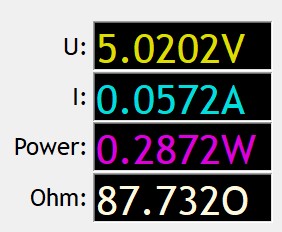
The Atom 3 does go into an idle mode when no sound is being played:
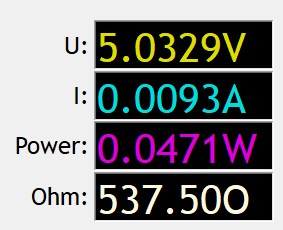
The Atom 3 has excellent heat management and does not get warm to the touch even with prolonged use.
SOUND:
Note: I made the following observations switching back and forth between the Audirect Atom 3 and the Apple dongle repeatedly under sighted conditions. I attempted to volume-match the two devices were volume-matched to within .5 dB. Any perceived differences between the two sources may be a result of a remaining volume difference. There was also a delay of several seconds when switching between devices. The HiFiMan HE400SE was used as the transducer for this comparison. In most cases, any differences between competently designed sources are infinitesimal and not necessarily apparent under uncontrolled testing conditions.
I also made the following observations with a system-wide -4 dB pre-amp setting as suggested here. While I recommend using this pre-amp setting to preserve fidelity, it does reduce the headroom of all connected source devices. Using the Audirect Atom 3, I achieved my regular listening volume with the Windows system volume set to 86/100 with this pre-amp setting applied. I had to max out the Windows system volume control using the Apple dongle to achieve a similar volume. On Android, meanwhile, it is not possible for me to achieve my regular listening volume with the Apple dongle and the HiFiMan HE400SE thanks to the Apple dongle’s limited output on Android.
The Audirect Atom 3 was more resolving and had better treble and bass extension than the Apple dongle. Its soundstage was more open and the instruments and vocals had better separation. The Apple dongle sounded comparatively thin and flat. With that said, if I had to assign an arbitrary numerical value to the subjective sound quality improvement moving from the Apple dongle to the Atom 3, it would be no more than 15%. When considering this figure, I encourage my readers to keep in mind that the Atom 3 costs five times as much as the Apple dongle.
CLOSING WORDS:
Unless you need the Audirect Atom 3’s low-profile unibody design, there are more powerful dongle DAC/AMP options around the same price. It also bears repeating that your money will almost always go further when put towards a more expensive transducer as opposed to a more expensive source device.
The Audirect Atom 3 can be purchased here:
Audirect Atom3 ESS9280AC PRO Chip Support DSD512 32bit/768kHz HiFi Po (shenzhenaudio.com)
HiBy R6 Pro II Impressions
INTRODUCTION AND DISCLAIMER:
The HiBy R6 Pro II is a digital audio player (DAP) with 3.5mm single-ended and 4.4mm balanced headphone and line-out outputs. It retails for $749. I received the R6 Pro II through a review tour organized by HiBy. I was able to test it for a week and a half before writing my review. I paid the shipping costs to the next reviewer, and no compensation was received for this review.
PACKAGING AND ACCESSORIES:
The HiBy R6 Pro II comes in a square white box. The package includes a leather protective case, screen protectors for both the front screen and the glass portion of the rear of the device, a long, sturdy USB-C to USB-C cable for charging and data transfer, a female USB-C to male USB-A adapter, a quality control pass chit, and a user manual.
The USB-C to USB-A adapter lacks backpower protection and is not recommended. The areas of the protective case which cover the device’s buttons are not labeled. If I had more time with the device to learn the layout this would be less of an issue, but I opted not to use the case during my time with the R6 Pro II as a result. In addition, these areas should be more prominently raised from the surface of the case. They blend into the rest of the case and are easy to miss.
BUILD QUALITY AND DESIGN:
On the one hand, the HiBy R6 Pro II has an attractive and visually interesting design that makes excellent use of a variety of premium materials and surface textures. On the other hand, this is a large, bulky, and heavy device. While I can see myself taking this device to a coffee shop to listen to while working, I cannot picture myself carrying it on my person and using it on the go with any regularity.
I was also not a fan of the R6 Pro II’s button layout. The device has power and volume up/down buttons along the right side, which is familiar to me as a Google Pixel user. However, the R6 Pro II’s play/pause and fast-forward buttons share the same raised surface. The similarity in profile between the left and right side controls repeatedly led me to rewind to the beginning of a track when I intended to turn the screen on. I would have liked to see three distinct buttons on the left side dedicated to playback control.
DEVICE PERFORMANCE (NON-SOUND):
The HiBy R6 Pro II is disappointingly sluggish and not nearly as responsive to input as I would expect from a device that retails for more than my Google Pixel 7. The Fiio M11 Plus I had the opportunity to try last year at a Head-Fi meet was much snappier despite its older Snapdragon 660 processor.
I was also not a fan of certain user interface choices. Specifically, adjusting the device volume while the screen is powered on triggers a full-screen volume control overlay which interrupts menu navigation. I could not locate an option to disable this overlay.
While I did not keep track of how much continuous listening I could get out of the R6 Pro II on a single charge, I needed to charge it roughly once every 36 hours. The device appears limited to 12 Watt charging, which is slow by modern standards.
THIRD-PARTY MUSIC APPS:
I encountered inconsistent results when first using Spotify on the HiBy R6 Pro II. After I first downloaded the app, I was unable to initiate music playback. Songs failed to play or buffer upon selection, and the “Home” tab refused to load at all. After revisiting Spotify later in the day, however, I was able to play music and access the “Home” tab without difficulty.
SOUND AND THERMAL PERFORMANCE:
The HiBy R6 Pro II offers tremendous resolution, catapulting the already impressive detail retrieval of my beloved Moondrop S8 to new heights against a pitch-black background. The AK4499EX digital-to-analog converter (DAC) chip, by Asahi Kasei Microdevices Corporation, is impressive. HiBy’s Mage Sound 8-ball (MSEB) pseudo-parametric equalizer (PEQ) is a useful feature, but I always prefer to have true PEQ if possible.
The R6 Pro II’s amplifier section fails to impress and likely isn’t enough to power many over-ear headphones. I reached my usual listening volume with the HiFiMan HE400SE through the R6 Pro II’s balanced output with high gain and a volume of 75/100. I did not notice an audible difference between Class A and Class AB amplification, which the R6 Pro II allows the user to toggle between. Class A mode does make the device warmer and drains the battery faster, so it’s best to leave it in Class AB.
CLOSING WORDS:
Since the advent of high-performance balanced output dongle DAC/amplifiers and increased storage availability on flagship smartphones, I have had little interest in DAPs. They tend to be bulky, underpowered, and expensive for their specifications. Despite its impressive resolving capabilities, the HiBy R6 Pro II does little to change my mind. I would not purchase it with my own money.
Tanchjim Space Lite Impressions
DISCLAIMER:
I received the Tanchjim Space Lite, a DAC/AMP combo with a 3.5 mm single-ended output and CS43131 DAC, from ShenzhenAudio in exchange for my review. This unit costs $44.99 at ShenzhenAudio.
HEADPHONES:
I tested the Tanchjim Space Lite with the following headphones:
- Moondrop S8
- Kiwi Ears Orchestra Lite
- Dunu Vulkan
- SeeAudio Bravery
- Moondrop Void
- HiFiMan HE400SE
MUSIC:
I tested this device with FLAC local files and Spotify Premium streaming. Check out my last.fm page to see what I’m listening to:
XenosBroodLord’s Library | Last.fm
STANDARDS COMPLIANCE AND FUNCTIONALITY:
Disappointingly, the Tanchjim Space Lite does not implement headset controls, pause on headphone disconnect functionality, or connector status transmission to the host device. I have complained about limited manufacturer support for these standards for years and the number of brands that make standards compliance a priority remains short. I realize this concern may not be widely shared across the audiophile market, but I cannot imagine that ensuring compliance would be a heavy burden on manufacturers.
POWER DELIVERY:
I made the following observations with a system-wide -4 dB pre-amp setting as suggested here. While I recommend using this pre-amp setting to preserve fidelity, it does reduce the headroom of all connected source devices.
With the Tanchjim Space Lite and the Moondrop S8, I achieve a roughly 80 dB listening volume at a Windows system volume setting of 20/100. To reach the same volume with the Moondrop Void, I need to adjust the system volume to 35/100, while the HiFiMan HE400SE requires a setting of 60/100.
POWER CONSUMPTION AND HEAT MANAGEMENT:
I measured the power consumption of the Tanchjim Space Lite connected to my PC with the Windows system volume set to 35/100. The Space Lite was used to play a -10.1 dBV 1 kHz test tone from REW through the Moondrop S8, while the measurement below was taken. This level of output achieved an SPL of roughly 94 dB, as registered by my IEC-711 clone microphone.

The Space Lite does not appear to have an idle mode. The following measurement was taken with no headphone connected to the device:
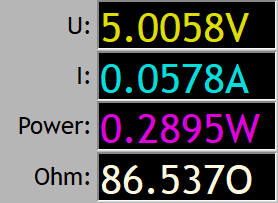
The Space Lite has excellent heat management and does not get warm to the touch even with prolonged use.
SOUND:
Note: I made the following observations switching back and forth between the Tanchjim Space Lite and the Apple dongle repeatedly under sighted conditions. I attempted to volume-match the two devices were volume-matched to within .5 dB. Any perceived differences between the two sources may be a result of a remaining volume difference. There was also a delay of several seconds when switching between devices. The Moondrop S8 was used as the transducer for this comparison. In most cases, any differences between competently designed sources are infinitesimal and not necessarily apparent under uncontrolled testing conditions. Using the Space Lite I achieved my regular listening volume with the Windows system volume set to 20/100. I had to set the the Windows system volume control to 30/100 using the Apple dongle to achieve a similar volume. Android is another story. Because the Apple dongle’s output is limited on Android devices, achieving my usable listening volume using the Apple dongle and the Moondrop S8 required a volume setting of 24/25.
The Space Lite provides a slight bump to clarity and resolution compared to the Apple dongle. In particular, the Space Lite brings more emphasis to mid treble sparkle and upper treble air. This difference is ultimately minimal. At the same time, the Space Lite brings a sensation of maturity and control to transient delivery that stands in contrast to the sense of oversharpening one sometimes hears with ESS chips. This is the same quality I observed in the Truthear Shio, a more expensive DAC/AMP that also uses a Cirrus Logic DAC chip.
CLOSING WORDS:
The Tanchjim Space Lite is a good all-rounder dongle DAC/AMP. It provides greater clarity and more headroom compared to the Apple dongle, but does not consume vastly more power. While the lack of attention to standards compliance and the absence of an idle mode are regrettable, the Space Lite is still a good option for audiophiles who don’t require a balanced output for portable listening.
The Tanchjim Space Lite can be purchased here:
TANCHJIM SPACE Lite CS43131 Portable USB DAC/AMP (shenzhenaudio.com)
Thanks, I was curious about this one. The sub $50 market for dongle DAC/Amps doesn’t have many. I still think the 7HZ SEVENHERTZ 71 is my favorite in the category, but it is about half the power of the Space Lite.
Audirect Beam 4 Review
INTRODUCTION AND DISCLAIMER:
The Audirect Beam 4 is a DAC/AMP combo with both 4.4mm balanced and 3.5 mm single-ended outputs, an ES9281 AC PRO DAC chip, and a 1200 mAh onboard battery. I received the Beam 4 from ShenzhenAudio in exchange for my review. The Beam 4 costs $239.99 at ShenzhenAudio.
HEADPHONES:
I tested the Audirect Beam 4 with the following headphones:
- Moondrop S8
- Moondrop Chu 2
- Moondrop Void
- HiFiMan HE400SE
PACKAGING AND ACCESSORIES:
The Audirect Beam 4 comes in a small plain blue rectangular box. It includes a short USB-C to USB-C cable, a USB-C to USB-A adapter, and a user manual. The adapter lacks active circuitry to prevent backpower, as is often the case with these included adapters.
STANDARDS COMPLIANCE AND FUNCTIONALITY:
Unlike several other Audirect DAC/AMPs I have evaluated, the Audirect Beam 4 does not implement headset controls, pause on headphone disconnect functionality, or connector status transmission to the host device. This is especially disappointing considering Audirect’s inclusion of these features in many of their other products.
The onboard battery is a helpful feature under certain conditions but the implementation needs additional fine-tuning. When the Beam 4 is paired with a smartphone as its transport device, the Beam 4’s onboard battery meaningfully extends the amount of time the smartphone can be used for music playback. While I do not have exact figures, I can use the Beam 4 with my Google Pixel 7 for music playback at least as long as I can use a far more power-efficient dongle DAC/AMP such as the Moondrop Dawn, if not longer. However, the onboard battery appears to run into issues when connected to a constant power source, such as a PC. When I was using the Beam 4 at my desktop, the Beam 4 ran out of power entirely several times and would not run solely off of the USB-C connection from my PC. I was forced to turn off the Beam 4 and recharge its internal battery before I could resume using it. This should never happen with a DAC/AMP connected to a constant power source. Hopefully, this flaw can be addressed through a firmware update, but as of right now, this is a dealbreaker for me.
POWER DELIVERY:
With the Audirect Beam 4 on the low-gain setting and with the Moondrop S8 connected to the 4.4mm balanced output, I achieved my typical listening volume of around 85 dB at a Windows system volume setting of 25/100. To reach a perceptually similar volume with the Moondrop Void using the 3.5mm single-ended output, I increased the system volume to 65/100. The HiFiMan HE400SE required a setting of 60/100 using the 4.4mm balanced output. I did not need to use the Medium or High gain modes for any of my headphones.
POWER CONSUMPTION AND HEAT MANAGEMENT:
I measured the power consumption of the Audirect Beam 4 connected to my PC with the Windows system volume set to 35/100. The Beam 4 was used to play a -10 dBV 1 kHz test tone from REW through the Moondrop S8, while the measurement below was taken. This level of output achieved an SPL of roughly 94 dB, as registered by my IEC-711 clone microphone.

This is a very high power consumption value, especially compared to a device like the Truthear Shio, measured under the same conditions using the balanced output:
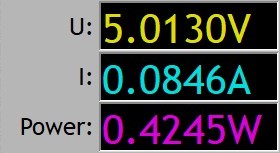
The Beam 4 does appear to have an idle mode:
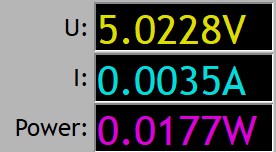
The Beam 4 heats up with extended use, especially when stored in a pocket or other enclosed space.
SOUND:
I made the following observations with a system-wide -4 dB pre-amp setting as suggested here. While I recommend using this pre-amp setting to preserve fidelity, it does reduce the headroom of all connected source devices.
The Audirect Beam 4 is a neutral, uncolored, and resolving source device. However, it does not audibly distinguish itself from any number of other neutral, uncolored, and resolving source devices from a variety of manufacturers that come in around a third of its asking price.
CLOSING WORDS:
Even if the issues I encountered using the Audirect Beam 4 in a desktop setting are resolved through a firmware update, the Beam 4 still appears to use its onboard battery to mask a much higher power draw than any of the other similarly configured source devices I have evaluated to date. If the Beam 4 was more efficient, it either would not require an onboard battery, which might make a smaller form factor possible, or could be used far longer than its peers in conjunction with the average smartphone. As it is, the Beam 4 is competitive in terms of runtime but is larger and heavier than its competitors while not sounding noticeably better than much less expensive devices. I cannot recommend the Beam 4 at its current price.
The Audirect Beam 4 can be purchased at the link below:
AUDIRECT Beam 4 ES9281AC Pro Portable USB DAC/AMP (shenzhenaudio.com)
Moondrop Chu II Review
INTRODUCTION AND DISCLAIMER:
The Moondrop Chu II is an in-ear monitor (IEM) with one 10mm aluminum-magnesium composite alloy diaphragm dynamic driver in each housing. It is a sequel release to the Moondrop Chu and now features a removable 2-pin cable. The Chu II retails for $18.99 at ShenzhenAudio. I received the Chu II from ShenzhenAudio in exchange for my review.
PACKAGING AND ACCESSORIES:
The Moondrop Chu II arrives in a rectangular grey cardboard box with a lid adorned with an anime waifu illustration. Technical specifications and a frequency response graph for the Chu II appear on the back. Within, the Chu II earpieces are secured in a black sheet of foam. The package includes three pairs of generic silicone eartips (S, M, L) and the same small Moondrop-branded black pleather storage pouch included with the Moondrop Jiu. Unfortunately, the Chu II does not include Moondrop Spring Tips like the Jiu and the original Chu. Also inside the box are a quality control pass chit, user manual, and contact card linking to Moondrop’s Tencent QQ account.
BUILD QUALITY AND DESIGN:
The Moondrop Chu II is similar to the Moondrop Jiu and the original Moondrop Chu in appearance:
The Chu II’s finish is smooth with a shiny luster…The faceplates are oval-shaped…“L” and “R” indicators are also printed in copper adjacent to the cable entry sites. There are two pinprick circular vents on the interior face of the IEM body.
Unlike those two IEMs, the Chu II has a detachable cable. The cable connector housings are forward-swept at the same acute angle as the Jiu and Chu. The connector ports are recessed below the housing.
The Chu II has replaceable screw-in nozzles which contain the filter material. In the few weeks that I have had the Chu II, the finish on these nozzles has tarnished noticeably. The nozzles have a lip to secure eartips. The nozzles have saucer plate-style mesh coverings.
The cable is unbraided and uses a soft transparent sheath. The Y-split hardware is a simple translucent rubber cylinder. There is no chin-adjustment choker and the cable is mildly tangle-prone. The cable does have preformed earguides. The 3.5mm jack uses an L-shaped housing with significant strain relief. There is no strain relief at the Y-split.
COMFORT, FIT, AND ISOLATION:
The Moondrop Chu II is identical in comfort, fit, and isolation to the Moondrop Chu. The Moondrop Chu II is intended to be worn cable-up. The nozzles have a shallow insertion depth. Given the relatively small size of the earpieces, the Chu II is very comfortable to wear for extended periods, but secureness of fit and isolation are slightly below average. The Chu II has worse driver flex than the original Chu or the Jiu.
MEASUREMENTS:
My measurements of the Moondrop Jiu can be found on my expanding squig.link database:
Moondrop Chu 2 — Squiglink by Bedrock Reviews
SOUND:
Unlike the Moondrop Jiu, which was essentially a minor refinement of the original Moondrop Chu, the Chu II has a noticeably more V-shaped sound signature compared to the Chu.
The Chu II has more bass presence than the Chu down from the sub-bass to around 400 Hz. The Chu II sounds more full and impactful as a result. Thankfully, this bump is moderate enough to continue to avoid bass bleed. The Chu II’s bass is more resolving, textured, and sharply articulated than the original Chu’s.
The Chu II has greater contrast between its upper and lower midrange regions than the Chu. Due to the increased bass presence, this does not negatively impact the overall tonality. The Chu II actually has much better timbre than the Chu. The Chu sounds thinner and more compressed, particularly with respect to analog percussion. Midrange clarity and instrument separation are excellent. However, I do feel that the Chu II has too much presence. This is most evident when listening to distorted electric guitars, which take on a buzzsaw-like quality on some tracks. Female vocals are more prominent compared to male vocals and enjoy slightly better clarity, but both sound full and intelligible.
The Chu II not only retains the Chu’s prominent lower treble emphasis but has a hair more energy in this region. This did not bother me, but treble-sensitive listeners may want to approach it with caution. The Chu II also shifts some energy from the upper treble to the mid-treble, which helps provide some of the sparkle that the Chu lacked. The upper treble remains well extended. The Chu II has superior overall detail retrieval and improved soundstage height compared to the Chu.
CLOSING WORDS:
While I may take issue with its presence region and mourn the absence of Spring tips included in the package, I think the Moondrop Chu II’s tuning is going to be well received by the average listener. More importantly, Moondrop has once again raised the bar for what is possible in terms of technical performance in a $20 IEM with the Chu II’s new dynamic driver. This is a great starting point for a budding audiophile.
Finally, while the Chu II is a marked improvement on the Chu, I still recommend saving for a higher tier IEM instead of replacing one with the other.
The Moondrop Chu II can be purchased below:
MOONDROP CHU 2 10mm Dynamic Driver In-ear Headphone (shenzhenaudio.com)
Moondrop Starfield II Impressions
INTRODUCTION AND DISCLAIMER:
The Moondrop Starfield II features a 10mm lithium-magnesium composite alloy diaphragm dynamic driver in each housing and retails for $109.99. It is a sequel release to the Moondrop Starfield. I received the Starfield II from ShenzhenAudio in exchange for my review.
NON-SOUND IMPRESSSIONS:
It is clear that the Moondrop Starfield II reuses shells from the the poorly received Moondrop Stellaris. This suggests that the Starfield II may be intended to capitalize on consumer goodwill towards the original Starfield to salvage some of the material costs associated with the Stellaris project.
The Starfield II includes rubber bass plugs that can be inserted into the IEM’s pressure vents. This has the effect of boosting the Starfield II’s sub-bass region substantially. In practice, the bass plugs are poorly designed and implemented. The diminutive size of the bass plugs means that it is not possible to quickly insert and remove them from the pressure vents. Successfully inserting the plugs required many minutes of effort. The plugs appear inconsistently produced, as I had to try several to get one to fit. Once inserted, the plugs can easily fall out and, if inserted too deeply, can block the pressure vents and cause the dynamic driver diaphragm to become misaligned. As a result, sound from the earpiece will be lost until pressure is re-equalized. Finally, I expect the plugs to be easily misplaced. Moondrop includes six of these plugs with the Starfield II, perhaps in anticipation of some of these issues.
MEASUREMENTS:
My measurements of the Moondrop Starfield II can be found on my squig.link database:
Moondrop Starfield II (No Bass Plug) — Squiglink by Bedrock Reviews
SOUND:
Both with and without the bass plugs, the Moondrop Starfield II is a significant departure from the restrained, mature, and inoffensive tunings that Moondrop built its popularity upon.
Without the bass plugs, the Starfield II is a bright, midrange-forward, bass-light IEM that, depending on the track, can often be described as harsh-sounding. Heavy rock genres and electronic dance music are particularly fatiguing to listen to. With the bass plugs inserted, the Starfield II is more tolerable sonically, even if not as subjectively powerful sounding as measurements might indicate.
However, even with the bass plugs inserted, bass notes come across as blunted and lacking texture. Resolution in the bass range is acceptable for the Starfield II’s price.
In both configurations, there is too much ear gain and too much presence, so much so that even male vocals can sound sibilant. Male vocals sound thin and strained, and female vocals sound sharp. On the other hand, midrange clarity and instrument separation are excellent, and the timbre is surprisingly realistic given the issues listed above.
The Starfield II has too much lower and mid-treble, which further exacerbates ear fatigue. There is an excess of sparkle, and treble transients sound oversharpened. Considering the cost, detail retrieval is average. Imaging and soundstage are better than expected.
CLOSING WORDS:
The Moondrop Starfield II fails to meet expectations associated with its predecessor — one of the most popular budget IEMs of the last five years. There are expectations associated with the Starfield name. A Starfield sequel should have been easy to recommend to a broad swath of listeners even if it were not the most exciting-sounding IEM on the market. The Starfield II falls well short of that bar. I do not recommend it, and urge Moondrop to treat this lineage of products with greater care and respect for consumer expectations.
Hidizs MP145 Review
INTRODUCTION AND DISCLAIMER:
The Hidizs MP145 is an in-ear monitor (IEM) with a single 14.5mm planar magnetic driver in each housing. The MP145 is currently available at an early bird price of $139 on Kickstarter. I received the MP145 directly from Hidizs in exchange for my review.
PACKAGING AND ACCESSORIES:
The Hidizs MP145 comes in a black plastic box with a black slipcover. Technical details, in Chinese, English, and Japanese, are printed on the back of the slipcover. The lid of the box is embossed with the Hidizs logo. The MP145 earpieces are cushioned in a black sheet of foam within. The package includes three sets of silicone eartips (Vocal, Balanced, and Bass), each with three sizes (S, M, L) as well as a Hidizs-branded black pleather pouch, quality control pass chit, user manual, warranty card, and velcro tie.
BUILD QUALITY AND DESIGN:
The Hidizs MP145 earpieces are crafted from aluminum alloy and feature a seven-sided oblong faceplate with a three-sided fin-shaped element. A stepped pattern descends from each edge of the fin to the edges of the faceplate. Along the fin’s vertical axis are two elongated vents. A single circular vent is located above the nozzle on the interior of the housing. “HIDIZS MP145” is printed on the inside face around each earpiece’s directional indicator (also printed). The 2-pin entry sites are flush with the surface of the earpiece.
The MP145 features screw-on, interchangeable tuning nozzle caps that are slightly wider than their respective nozzles. This ensures a secure fit for eartips.
This review sample included a stylish and flexible 4.4mm balanced cable in gunmetal gray. It has a quad braid below Y-split and double helix pattern above. It features mirror-polished dark grey metal hardware with a single brass-colored ring at jack. There is rubber strain relief at the jack but none at the Y-split. The 2-pin connector housings are distinguished by blue and red rings for left and right. It has a chin-adjustment choker and preformed clear plastic earguides. The cable can occasionally get tangled but I did not find it to be a major issue.
COMFORT, FIT, AND ISOLATION:
Despite their size, the MP145’s earpieces are comfortable — the majority of their bulk rests outside the ear canal, and the nozzles have a shallow insertion depth. The fit and noise isolation are average, and there is no driver flex.
MEASUREMENTS:
My measurements of the Hidizs MP145 can be found on my expanding squig.link database:
Hidizs MP145 (Rose Gold) — Squiglink by Bedrock Reviews
SOUND:
The Hidizs MP145 has a warm sound signature with plenty of mid-bass presence and a prominent lower-treble peak.
The MP145 has excellent sub-bass extension, with tight, detailed and punchy bass. However, there is a bit of mid-bass bleed.
The Red filter of the MP145 provides the most bass, followed by the Silver filter and then the Rose Gold filter with the least bass. The filters do not alter the bass tuning, but the Red filter differs from the Silver and Rose Gold in the ear gain region. It has a mild, broad vocal plateau-style tuning from 1.5 kHz to 8 kHz. With the Rose Gold and Silver filters, the MP145 has a more distinct ear gain peak centered at roughly 2.5 kHz. While I generally prefer a distinct ear gain peak centered at 3 kHz, in the case of the MP145, I enjoyed the more relaxed upper midrange that the Red filter provided and spent most of my time with the MP145 using the Red filters.
Male vocals with the Red filter have good body, but lack presence and definition. Though switching to Silver or Rose Gold helped with male vocal separation, they still lacked detail. Female vocals, however, are more prominent and better defined. Female vocals are more forward, better separated, and more detailed. Timbre is realistic and there is a healthy amount of presence.
I preferred to use the MP145 with misodiko foam eartips rather than the included silicone eartips or my usual liquid silicone Softears UC tips. The lower treble peak was too intense for me with silicone eartips but foam eartips effectively reduced it, with minimal loss of upper treble extension.
Despite the MP145’s strong bass emphasis, it has excellent upper treble extension and a wide soundstage. However, instrument separation is average. Detail retrieval is very good for the price point.
CLOSING WORDS:
The Hidizs MP145 is a very good IEM and belongs on the short list of recommendations between $100 and $200, particularly if you are looking for a warmer IEM than many of the more neutral or reference-tuned options in this price bracket.
Hidizs Next Gen Ultra-large Planar HiFi IEMs — 9 Sound Types by Hidizs — Kickstarter
Moondrop Dawn Pro Review
INTRODUCTION AND DISCLAIMER:
The Moondrop Dawn Pro is a DAC/AMP combo with both 4.4mm balanced and 3.5 mm single-ended outputs, dual CS43131 DAC chips, and a $49.99 price tag. I received the Dawn Pro from ShenzhenAudio in exchange for my review.
HEADPHONES:
I tested the Moondrop Dawn Pro with the following headphones:
- Moondrop S8
- Moondrop Void
- Moondrop Para
- HiFiMan HE400SE
- Hidizs MP145
- Hidizs MS1 Galaxy
- HiFiMan HE400SE
PACKAGING AND ACCESSORIES:
The Moondrop Dawn Pro comes in a round metal tin. Technical specifications for the Dawn Pro are printed in English and Chinese on the rear of the box. The product is held inside a foam mounting sheet inside the tin. In addition to the Dawn, the box includes a USB-C to USB-C cable, a quality control pass chit, a user manual, a contact card, and an unbranded Baseus USB-C female to USB-A male adapter (not recommended for use due to lack of backpower prevention circuitry). The C-C cable features a straight transparent rubber sleeve with visible wire-to-pin connections through the clear plastic connector housings.
STANDARDS COMPLIANCE AND FUNCTIONALITY:
The Moondrop Dawn Pro does not implement headset controls or pause on headphone disconnect functionality, nor does it send connector status to the host device.
POWER DELIVERY:
With the Moondrop S8 connected to the Moondrop Dawn Pro’s 4.4mm balanced output, I achieved a listening volume of around 77 dB at a Windows system volume setting of 7/100. To reach a perceptually similar volume with the Moondrop Void using the 3.5mm single-ended output, I increased the system volume to 20/100. The HiFiMan HE400SE required a setting of 36/100 over the single-ended output and 22/100 using the 4.4mm balanced output.
POWER CONSUMPTION AND HEAT MANAGEMENT:
Using my IEC-711 clone microphone, I measured the power consumption of my Moondrop Dawn Pro connected to my Windows PC with the system volume set to 26/100. For the test, I used the Dawn Pro to play a -10 dBV 1 kHz test tone from REW through the Moondrop S8. This sound level achieved an SPL of roughly 94 dB.
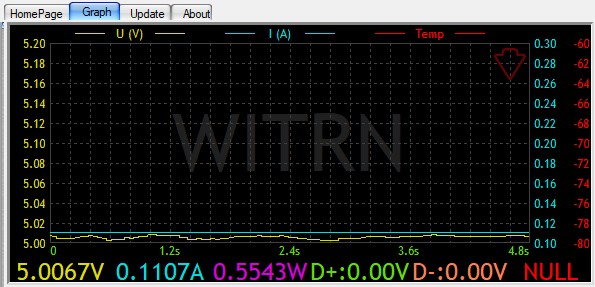
This is an average power consumption value for a device of this kind. It draws slightly more power than the Truthear Shio:

The Dawn Pro does not appear to have a true idle mode:
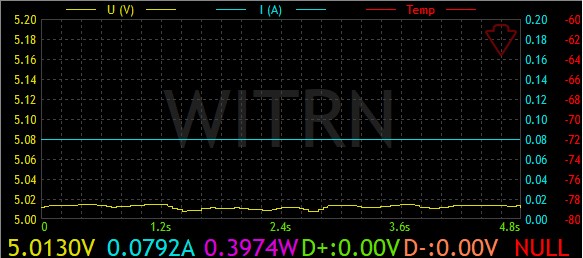
The Moondrop Dawn Pro can become warm if left in a pocket or other confined area for an extended period.
MOONDROP LINK SUPPORT:
The Moondrop Dawn Pro is supported in Moondrop’s Link app. You can select between four digital filters, turn off the LED lighting temporarily or permanently, switch between low or high gain, and adjust the hardware volume through the app:
SOUND:
Frequency response measured with 3.5mm jack out into motherboard Line-In
Note: I made the following observations switching back and forth between the Moondrop Dawn Pro and the Truthear Shio repeatedly under sighted conditions. There was a delay of several seconds when switching between devices. The two devices were volume-matched to within less than .1 dB. The Moondrop S8 was used as the transducer for this comparison. In most cases, any differences between competently designed sources are infinitesimal and not necessarily apparent under uncontrolled testing conditions.
In addition, I made the following observations with a system-wide -4 dB pre-amp setting as suggested here. While I recommend using this pre-amp setting to preserve fidelity, it does reduce the headroom of all connected source devices.
The Moondrop Dawn Pro is a neutral and uncolored source device. The Dawn Pro sounds more resolving than the more expensive Truthear Shio. The Dawn Pro has marginally better instrument separation and more controlled, impactful bass reproduction.
CLOSING WORDS:
Going into this review, I expected to prefer the Pro version of Moondrop’s Dawn over its non-Pro version. However, I found I appreciated the Dawn’s compact design for portability, and likely would choose it over the Pro if only selecting a device for on-the-go use. That said, the Pro offers greater versatility and is the better choice for desktop applications. Both are great-sounding devices that are remarkably affordable. For the foreseeable future, the Pro will be taking up space on my desk, which is the highest praise I can give it.
The Moondrop Dawn Pro can be purchased at the link below:
MOONDROP DAWN PRO Dual CS43131 Portable USB DAC/AMP (shenzhenaudio.com)
Moondrop FreeDSP Review
The Moondrop FreeDSP is a 2-pin cable with an integrated USB-C DAC/AMP. The FreeDSP has a retail price of $29.99. I received the FreeDSP from ShenzhenAudio in exchange for my impressions.
HEADPHONES:
During my review process, I used the Moondrop FreeDSP with the Moondrop S8.
APPEARANCE, DESIGN, AND BUILD QUALITY:
The FreeDSP is an attractive cable, with gunmetal grey wiring and hardware. The cable uses a quad-braid below the Y-split and a double-helix pattern above the Y-split. There is a microphone with a three-button control panel on the right hand side. I understand why this was included, but I personally would have prefered a more streamlined mic-less design. There is a chin adjustment choker and strain relief above the USB-C connector housing as well as above the Y-split. The cable has pre-formed plastic earguides. The 2–pin connector housings have black and red colored bands to indicate left and right. The cable is moderately microphonic and I recommend using the chin-adjustment choker to the extent possible (the mic control panel prevents the choker from going up as far along the cable as I would normally prefer).
POWER CONSUMPTION:
I tested the power consumption of my Moondrop FreeDSP with a Windows system volume of 60/100. To ensure that my results can be compared to my other power consumption measurements, I ran a -10 dBV 1 kHz REW test tone through the Moondrop S8 to reach an SPL of 94 dB as measured by my IEC-711 clone microphone.

This is stellar power consumption and plays in the ballpark of the Apple Dongle:
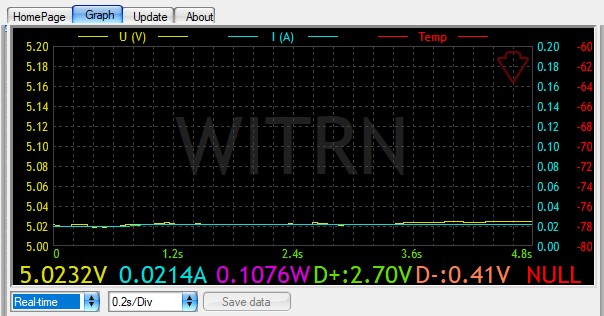
MOONDROP LINK SUPPORT:
The FreeDSP’s primary feature is PEQ, accessible through the Moondrop Link app. However, while the Link app has recently been updated, the newest iteration is inferior to the older version in many ways.
The new app appears designed mainly to advertise Moondrop’s other products, rather than enable the use of a Moondrop product the user actually owns.
The new app requires access to all files on the user’s Android device. This seems to be an effort to allow users to import EQ presets, however it is unclear what format the presets need to be in for the app to successfully import them. For example, the text file format used by AutoEQ exports from SquigLink is not compatible with the app. It is highly likely that Moondrop could have designed the app to not need such a privileged permission.
The Link app frequently failed to recognize my FreeDSP cable. When granted access, it crashed; otherwise, a toast message saying “no compatible device found” appeared.
When I was able to get the app to see the FreeDSP, the Link app’s PEQ has serious restrictions. Only 9 bands can be used, and adjustments can be made only within a 40Hz-10kHz window with gains between -12db and +3db, and Q values from 0.2 to 10. These limits make it tough or impossible to export presets from AutoEQ or Room EQ Wizard.
SOUND AND AMPLIFICATION:
The Moondrop FreeDSP is a neutral and uncolored source device. It is comparable in resolving capability to DAC/AMPs in the same price range in a more traditional dongle form factor. If you are listening on the go, you will be bottlenecked by ambient noise long before the resolution of the FreeDSP becomes a limiting factor.
At a Windows system volume of 16/100, I reached my typical listening volume with the Moondrop S8. Playing a -10 dB pink random noise signal, my uncalibrated IEC microphone reached a dB level of about 75 dB at this volume setting. With my Pixel 7, I was able to get my typical volume at an Android system volume of 11–12 out of 25.
CLOSING WORDS:
The Moondrop FreeDSP is an excellent dongle DAC/AMP substitute, with superb energy consumption, great detail retrieval, and enough power for any IEM in my collection. It also works seamlessly with Wavelet. However, as a standalone PEQ delivery system, the FreeDSP is a failure. I hope that Moondrop can redesign the Link app to be more functional, reliable, and less intrusive as quickly as possible.
